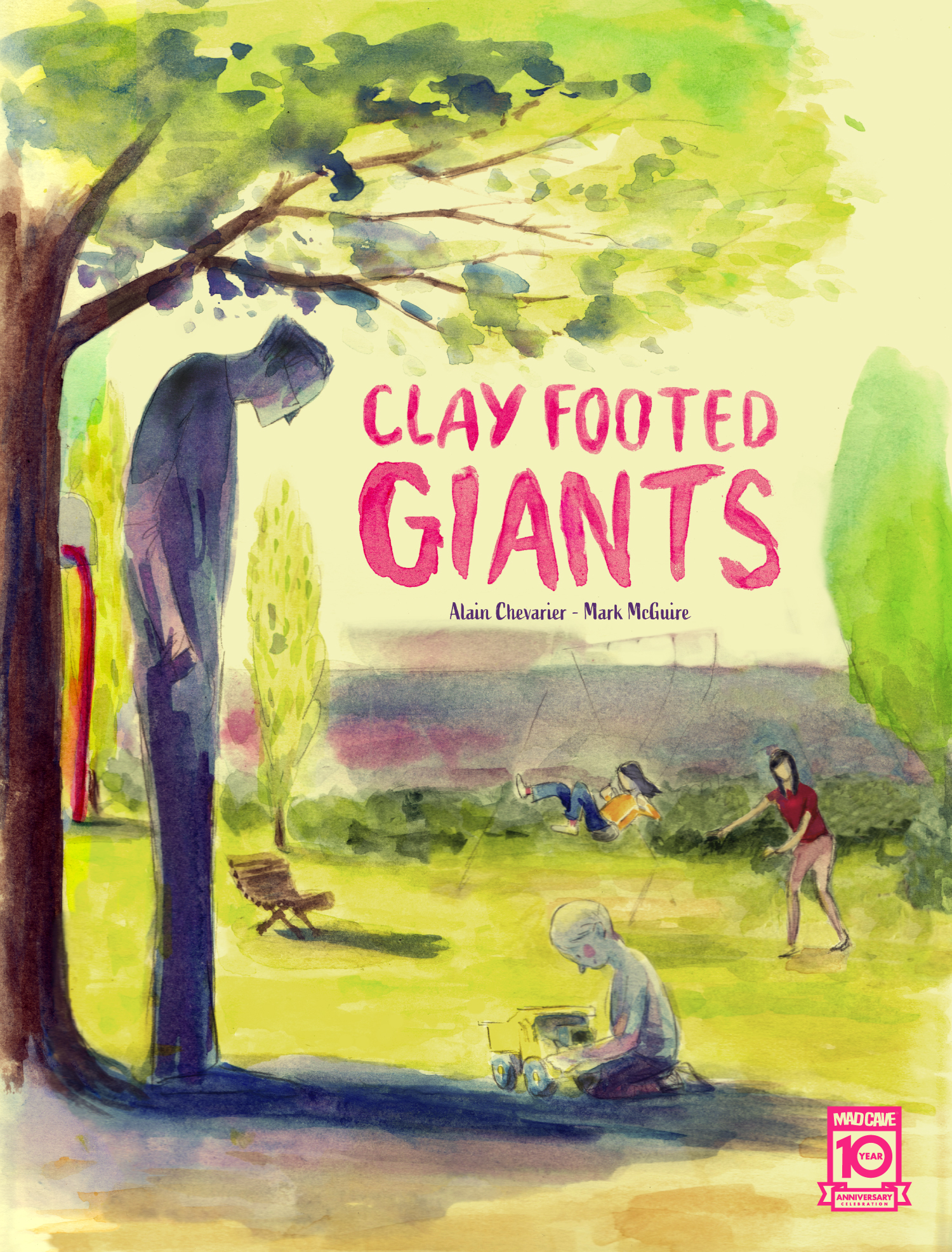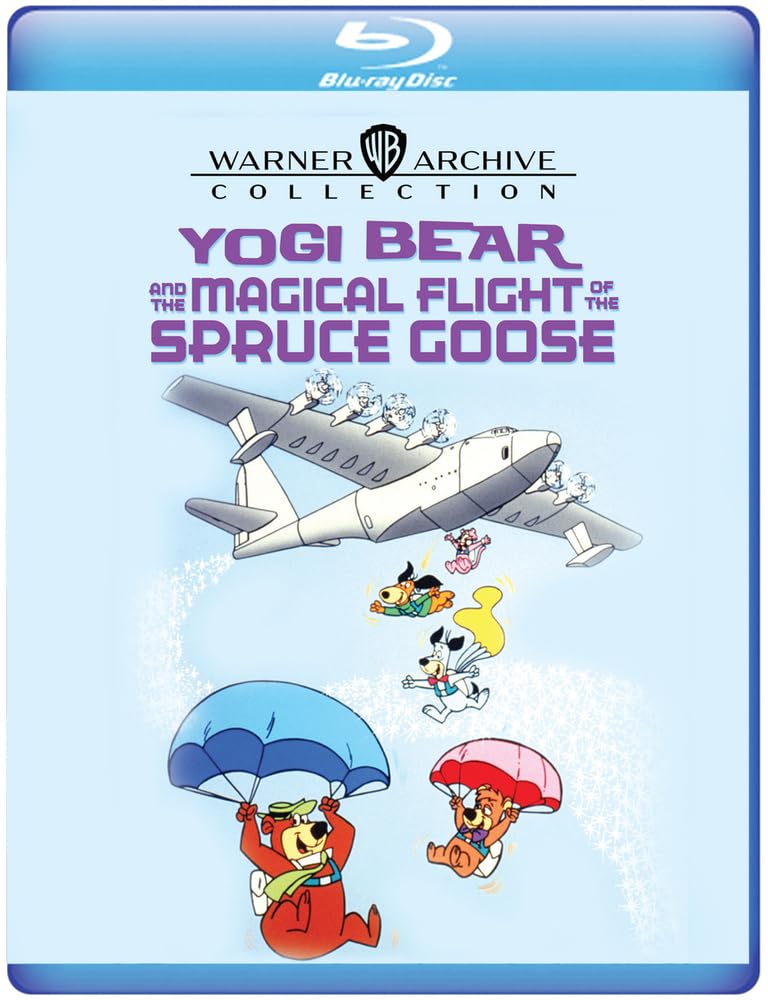
Comics have, since their golden age, been creations meant for entertainment, a source of escape. Whether it be the action packed adventures of various superheroes, the silliness of daily comic strips in the newspapers, or something else, comics have largely been a way for audiences to smile and feel good. On Oct. 8, Mad Cave Studios is taking comics in a different direction with the forthcoming graphic novel, Clay Footed Giants. The nearly 300-page graphic novel, written by Mark McGuire and Alain Chevarier, is an expansive examination on mental health and intergenerational trauma. This in-depth story will be discussed shortly. Throughout the course of the story’s rich examination, its transitions help to keep it moving fluidly, even as deeply emotional as it is. They will be discussed a little later. Chevarier’s artwork presented throughout the story is also of note as it ensures its own engagement from readers. It will also be discussed later. When that item is considered alongside the story and its transitions, the whole therein makes Clay Footed Giants in whole a presentation that will find interest among a very targeted audience.
Clay Footed Giants is an intriguing presentation from Mad Cave Studios. Spanning nearly 300 pages, this rumination on intergenerational trauma and mental health is a presentation that because of its heaviness, will appeal to an extremely targeted audience. The rumination comes through the trials and tribulations of two men, Pat and his friend Mathieu. Pat’s marriage is suffering as the story opens, as his wife, Ester, is working to advance her career. This forces Pat to become a stay at home father. The strain becomes too much for Pat more than once. As it turns out though, the strain is deeper seated than he realizes. As it turns out, his outbursts toward his own children are the result of his own childhood trauma, caused by his father, a Vietnam veteran. Eventually, Pat comes to the realization that his father instilled great mental trauma on him and his brother when they were children and he has carried the impact of that trauma his entire life. When he finally accepts this, it becomes the turning point for Pat and leads to things improving for him and his entire family.
Mathieu, Pat’s friend, has his own trauma to deal with. His story is secondary to that of Pat. What he is dealing with ultimately leads to a semi-violent confrontation between himself and his uncle at a funeral. Ultimately though, both he and Pat learn a lot about their trauma and how it played into their own problems. The overall examination of the men’s mental health struggles is a deep tale that, again, is not going to appeal to everyone. That is because it is so heavy and honestly artsy in its delivery. To that it, it forms a foundation for the graphic novel that will appeal mainly to those types and to professional therapists.
The transitions used within the course of the story help to keep it moving even despite its general presentation. There are clear chapter breaks that give readers the chance to catch themselves and take in everything that they have read. This in itself gives readers goals, rather than feeling like they have to fully immerse themselves in this expansive presentation all at once. Readers will know they can take the story at their own pace as a result, and in turn will be more motivated to read the entirety. Even within the story’s chapters, the scene changes are fluid even without clear breaks in the scenes. The ability of McGuire and Chevarier to make the scene transitions so clear even in their subtle use deserves applause in its own right. It and the chapter breaks ensure readers’ maintained engagement and entertainment just as much as the story. To that end, the transitions prove just as important for the appeal of the noted targeted readers as the story.
Putting the finishing touch to the story is its unique art, also crafted by Chevarier. The artwork is a distinct pencil-drawn presentation that sees Chevarier not just drawing but at times, using soft “strokes” from the sides of the pencil lead instead of from the tip. That is evident in the softness of the designs. On another note, Chevarier goes full artsy as Pat visits a physical therapist. Readers see him going inside himself in a sequence that looks like something right out of some arthouse flick. This is a sequence that will only be appreciated by a very specific audience. Overall, the art presented throughout the story gives the book its own unique identity separate from so many other graphic novels and comic books out there today. To that end, it plays just as much into this presentation as the story and its transitions. The whole therein makes Clay Footed Giants an offering that art flick fans, psychologists and psychiatrists will find the most appealing.
Clay Footed Giants, the forthcoming graphic novel from Mad Cave Studios, is an intriguing new offering from the comics publisher. It is a work that will appeal to a very targeted audience. This is made clear through its story, which is a rumination on childhood trauma and how that can be carried over into our adult lives. The transitions that are used throughout the story work well to ensure readers’ maintained engagement. The artwork that is featured throughout the nearly 300-page graphic novel is of its own importance, as it is so unique in comparison to so many other novels’ art. It is nearly incomparable if not entirely so. Keeping all of this in mind, all three elements work to make Clay Footed Giants a presentation that its targeted audiences will find worth reading at least once.
Clay Footed Giants is scheduled for release Oct. 8 through Mad Cave Studios. More information on this and other titles from Mad Cave Studios is available at:
Website: https://madcavestudios.com
Facebook: https://www.facebook.com/MadCaveStudios
Twitter: https://twitter.com/MadCaveStudios








